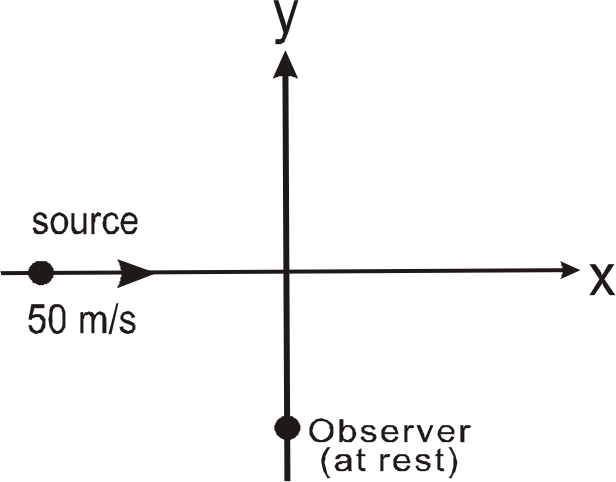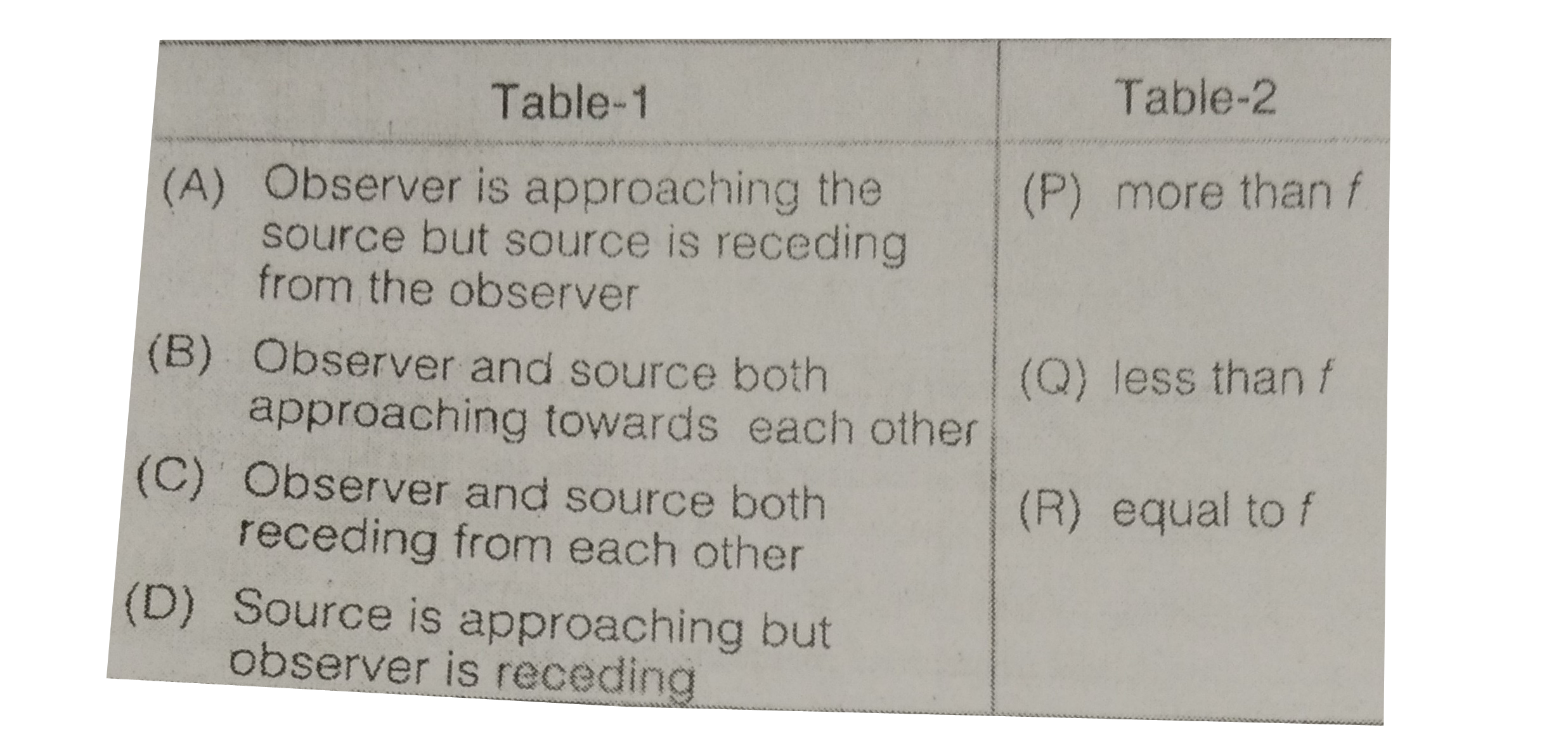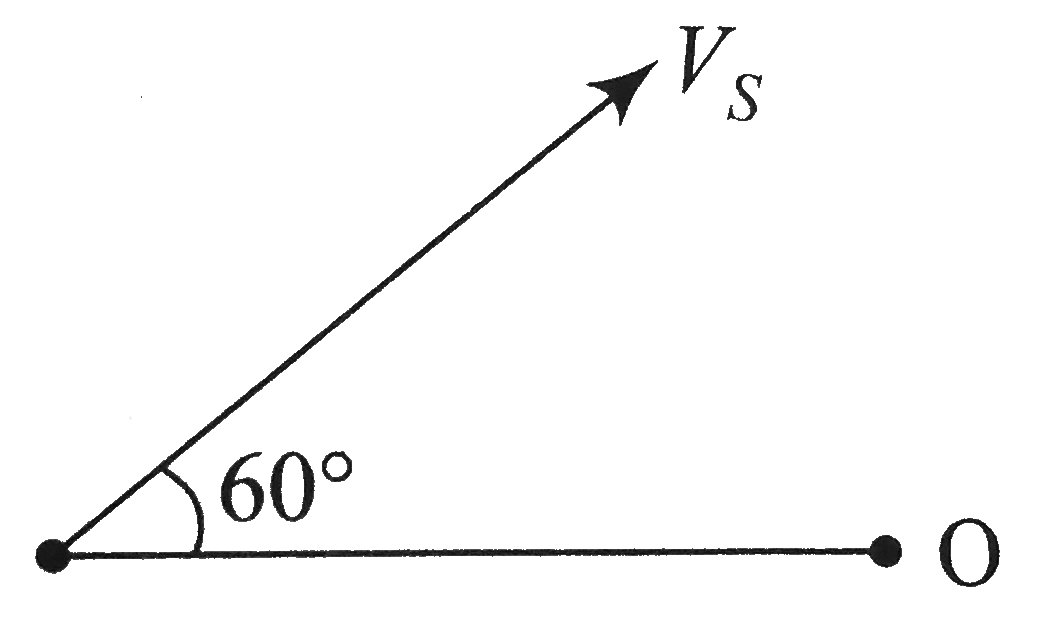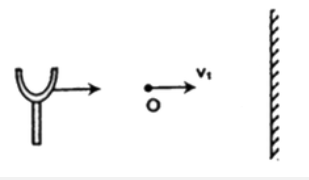A sound source is moving with speed 50m/s towards a fixed observer. Frequency observed by observer is 1000Hz. Find out apparent frequency observed by observer when source is moving away from observer (Speed of sound =350m/s)
750Hz
950Hz
550Hz
350Hz
The correct Answer is:A
To solve the problem, we will use the Doppler effect formula for sound. The formula for apparent frequency when the source is moving towards the observer is given by:
f′=f0v+vov−vs
Where:
- f′ = apparent frequency
- f0 = original frequency (frequency of the source)
- v = speed of sound in air
- vo = speed of the observer (0 if the observer is stationary)
- vs = speed of the source
Step 1: Determine the original frequency (f0)
From the problem, we know that when the source is moving towards the observer with a speed of 50m/s, the observed frequency is 1000Hz.
Using the formula for the case when the source is moving towards the observer:
1000=f0350+0350−50
Step 2: Solve for f0
Substituting the values into the equation:
1000=f0350300
Now, simplify the fraction:
1000=f0⋅76
Now, solve for f0:
f0=1000⋅67=60007≈857.14Hz
Step 3: Calculate the apparent frequency when the source is moving away from the observer
Now, we need to find the apparent frequency when the source is moving away from the observer. The formula for this case is:
f′=f0v+vov+vs
Here, vo=0 (observer is stationary) and vs=50m/s.
Substituting the values:
f′=f0350+0350+50
f′=f0350400
Step 4: Substitute f0 into the equation
Now substitute f0:
f′=60007⋅350400
Step 5: Simplify the expression
Now simplify:
f′=6000⋅3507⋅400
Calculating the values:
f′=21000002800=750Hz
Final Answer
The apparent frequency observed by the observer when the source is moving away is 750Hz.
---
- f′ = apparent frequency
- f0 = original frequency (frequency of the source)
- v = speed of sound in air
- vo = speed of the observer (0 if the observer is stationary)
- vs = speed of the source
Topper's Solved these Questions
Similar Questions
A sound source moving with speed 50 m/s along x-axis and observer at rest on y-axis.If the frequency observed by observer when source crosses the origin is 96 Hz, then the original frequency of source is :(speed of sound is given medium is 200 m/s)

View SolutionA sound source has frequency f. Source and observer both have same speed.For the apparent frequency observed by observer match the following.

View SolutionA source of sound moves towards an observer
View SolutionA source of sound moves towards an observe.
View Solution
A source of sound S emitting waves of frequency 100Hz and an observer O are located at some distance from each other. The source is moving with a speed of 19.4ms−1 at an angle of 60∘ with the source observer line as shown in the figure. The observer is at rest. The apparent frequency observed by the observer (velocity of sound in air 330ms−1) is
View SolutionA source of sound S is moving with a velocity of 50m/s towards a stationary observer. The observer measures the frequency of the source as 1000 Hz. What will be the apparent frequency of the source as 1000 Hz. What will be the apparent frequency of the source when it is moving away from the observer after crossing him? The velocity of the sound in the medium is 350m/s
View SolutionA source of sound S is moving with a velocity of 50m/s towards a stationary observer. The observer measures the frequency of the source as 1000 Hz. What will be the apparent frequency of the source as 1000 Hz. What will be the apparent frequency of the source when it is moving away from the observer after crossing him? The velocity of the sound in the medium is 350m/s
View SolutionA source of sound is travelling towards a stationary observer. The frequency of sound heard by the observer is 25% more that the actual frequency. If the speed of sound is v, that of the source is
View SolutionThere is a source of sound (a tuning fork) moving towards a reflecting wall will a speed of 30ms−1. The velocity of the sound in air is 330ms−1and the frequency of the tuning fork is 600 Hz. The observer is between the source and the wall and is moving with some velocity V1 towards the wall. The beat frequency heard by the observer is 4 Hz. If the tuning fork is waxed, the frequency beats heard by the observer becomes 3 Hz. If the new frequency of tuning fork is k then k/50 is

View SolutionAn engine giving off whistle is moving towards a stationary observer with 50m/s speed. What will be the ratio of the frequencies of the whistle heard when engine is approaching and receding from the observer? (speed of sound = 350 m/s)
View Solution
